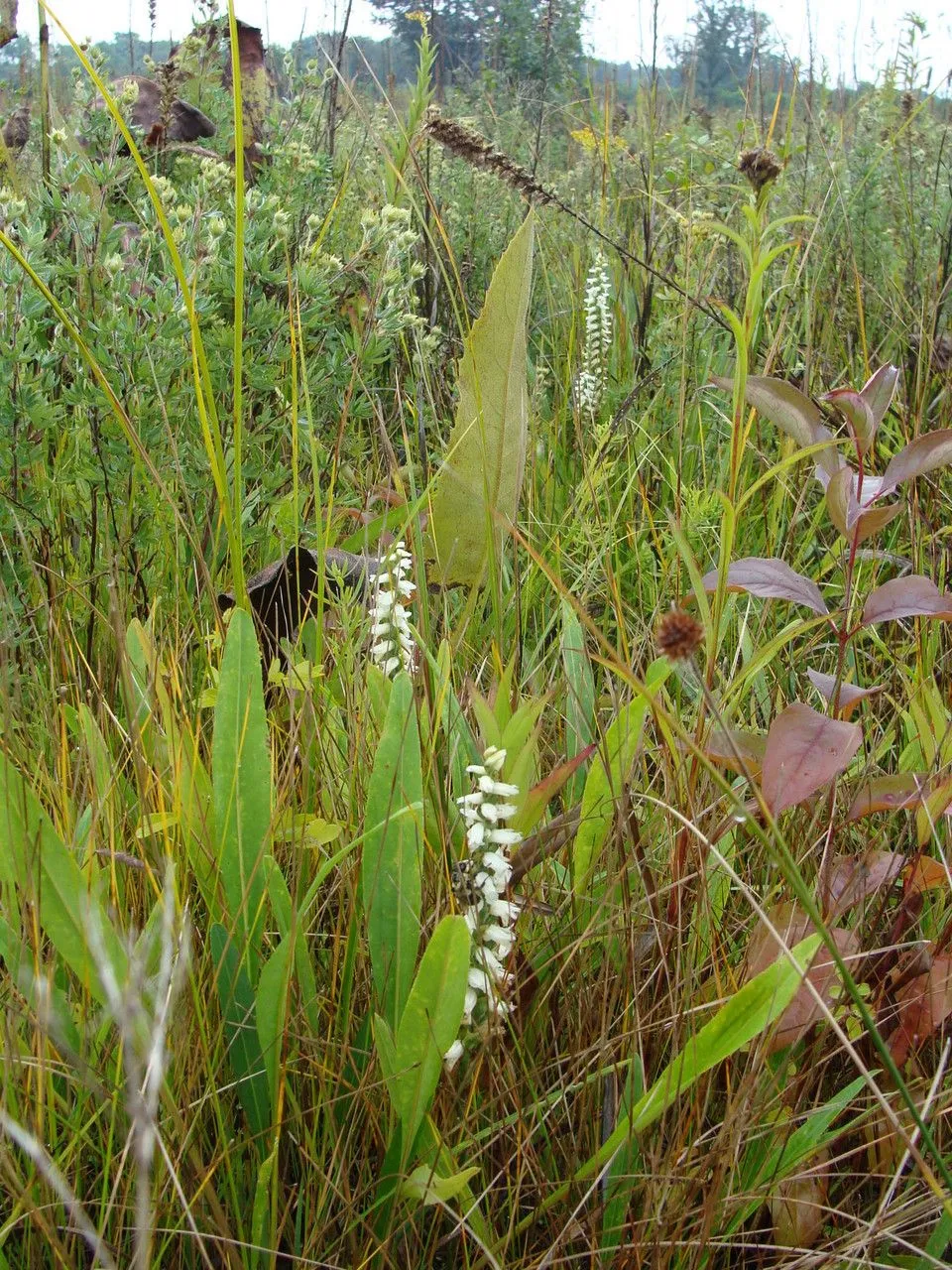
Author: (L.) Rich.
Bibliography: De Orchid. Eur.: 37 (1817)
Year: 1817
Status: accepted
Rank: species
Genus: Spiranthes
Vegetable: False
Observations: E. Canada to C. & E. U.S.A.
Nodding ladies’ tresses, scientifically referred to as Spiranthes cernua, is a captivating member of the family Orchidaceae. Renowned for its distinctive, helix-shaped floral arrangement, this perennial herb is a native inhabitant spanning from Eastern Canada through central and Eastern United States. The species was first described with scientific precision in De Orchid. Eur. in 1817, a testament to its longstanding recognition in botanical literature, with notable contribution from the eminent author, L. Rich.
This charming orchid is easily recognizable by its small, white, tubular flowers, which grow in a spiral around the central stem, resembling the intricate pattern of a braid or twisted rope. These flowers, which tend to nod slightly – hence the common name, emerge predominantly in the late summer and fall, adding a touch of elegance and delicate beauty to their natural habitats. Each blossom exhibits a delightful combination of a creamy white hue with an enticing yellowish lip, emitting a faint yet pleasant fragrance that beckons to pollinators and humans alike.
Spiranthes cernua is typically found in diverse environments ranging from meadows, bogs, and marshes to open woodlands and grasslands. This broad ecological adaptability underscores its resilience and the varied conditions it can thrive in, from moist soils to well-drained terrains. The plant’s basal leaves are slender and grass-like, forming a rosette that, while often inconspicuous, serves as the foundation from which the proud, floriferous stalk ascends.
Known not only for its beauty but also for its role in the ecosystem, the nodding ladies’ tresses supports a variety of pollinators, including bees and butterflies, contributing to biodiversity and the reproductive success of cohabitating flora. Conservation efforts are vital for this species, as its habitats face the threat of human encroachment and environmental changes.
The graceful Spiranthes cernua, or nodding ladies’ tresses, stands as a symbol of nature’s intricate artistry, showcasing the profound elegance and resilience of wild orchids. Its presence across a wide geographical range invites not only admiration but also a concerted effort to preserve the delicate landscapes it adorns.
Eng: common ladies’ tresses, nodding ladies’ tresses, nodding ladies’-tresses, nodding ladiestresses, nodding lady’s tresses, white nodding ladies’-tresses, nodding ladies’ tresses, dropping ladies’-tresses
Nld: knikkende schroeforchis
Fra: spiranthe penchée, spiranthe cernuée
En: Nodding ladies’ tresses, Nodding lady’s tresses, White Nodding Ladies’-Tresses, NODDING LADIESTRESSES, Navasot Ladies’-tresses Orchid, Navasota Ladies’-tresses Orchid, Parks Lady’s Tress Orchid, Common ladies’ tresses, Nodding ladies’-tresses, Nodding ladies’ tresses, Dropping ladies’-tresses
Ar: لولوبة منحنية
Zh: 俯花綬草, 俯花绶草
Nl: Knikkende schroeforchis
Fr: Spiranthe penchée, Spiranthe cernuée
Fa: اسپیرانتس سرنوآ
Zh-hant: 俯花綬草
Taken Sep 24, 2022 by Tristan Jaton-Maria (cc-by-sa)
Taken Jun 8, 2022 by Birgitta Tittel (cc-by-sa)
Taken Sep 24, 2022 by Tristan Jaton-Maria (cc-by-sa)
Taken Apr 23, 2021 by Laurel Brown (cc-by-sa)
Taken Sep 5, 2021 by Mary Alice Koeneke (cc-by-sa)
Taken Apr 11, 2020 by Eli Small (cc-by-sa)
Taken Sep 8, 2022 by tmzante (cc-by-sa)
Taken Sep 24, 2022 by Tristan Jaton-Maria (cc-by-sa)
Taken Sep 24, 2022 by Tristan Jaton-Maria (cc-by-sa)
Taken Sep 12, 2019 by Nicole M (cc-by-sa)
Taken Sep 24, 2022 by Tristan Jaton-Maria (cc-by-sa)
Taken Nov 4, 2013 by EOL − Daniel Carter (cc-by-nc)
Taken Dec 26, 2013 by EOL − Sam Kieschnick (cc-by-nc)
Taken Mar 5, 2016 by EOL − kimberlietx (cc-by-nc)
Taken Jan 14, 2015 by EOL − Bill Freiheit (cc-by-nc)
Taken Jan 1, 2016 by EOL − Bob O’Kennon (cc-by-nc)
Taken Jan 1, 1900 by EOL − WVU Herbarium (cc-by-nc-sa)
Growth form>: Single Crown
Growth habit>: Forb/herb
Growth rate>: Moderate
Ph maximum: 6.5
Ph minimum: 4.5
Family: Myrtaceae Author: (F.Muell.) K.D.Hill & L.A.S.Johnson Bibliography: Telopea 6: 402 (1995) Year: 1995 Status:…
Family: Rubiaceae Author: Pierre ex A.Froehner Bibliography: Notizbl. Bot. Gart. Berlin-Dahlem 1: 237 (1897) Year:…
Family: Sapindaceae Author: Koidz. Bibliography: J. Coll. Sci. Imp. Univ. Tokyo 32(1): 38 (1911) Year:…
Family: Asteraceae Author: A.Gray Bibliography: Pacif. Railr. Rep.: 107 (1857) Year: 1857 Status: accepted Rank:…
Family: Fabaceae Author: Medik. Bibliography: Vorles. Churpfälz. Phys.-Ökon. Ges. 2: 398 (1787) Year: 1787 Status:…
Family: Aspleniaceae Author: (Cav.) Alston Bibliography: Bull. Misc. Inform. Kew 1932: 309 (1932) Year: 1932…